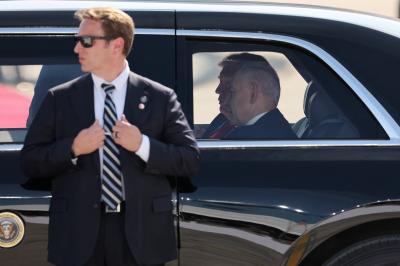I begin by admitting my error in judgment and my inability to grasp the magnitude of the American popular mood. I had thought that Vice President Kamala Harris would succeed Joe Biden, thus avoiding a fierce struggle. I also acknowledge not having learned from the experience of the 2016 elections, where polls predicted a landslide victory for Hillary Clinton. Yet Trump, who himself believed in these polls, was as surprised by his victory as Clinton was by her defeat, without the time to form a capable political team. This time, Trump was ready.
Donald Trump’s victory in yesterday’s elections and the Republican takeover of Congress mark a major turning point in American politics, driven by several factors influencing voter choice.
Economic Discontent
The key factor in Trump’s victory was widespread economic discontent. About 45% of voters reported being in a worse financial situation than four years ago, marking the highest level of economic dissatisfaction since 2008. This anxiety fueled a strong demand for change, similar to what led to Barack Obama’s victory. Trump positioned himself as the candidate of change, capitalizing on frustration with inflation, rising prices, and difficulties accessing home ownership.
The Border Issue
This issue was central to Trump’s discourse, present in all his campaign speeches. He did not hesitate to label migrants as criminals, rapists, and traffickers, promising mass deportations and harsh penalties against Mexico, which he accused of complicity in the migration crisis.
Demographic Shifts
Contrary to expectations, Trump made gains among minorities, garnering around a third of their support, the best Republican result since George W. Bush in 2004. Notably, support from Hispanic voters increased by 13 points compared to 2020. This development, crucial in key states, shows that the Republican strategy to broaden its base is starting to bear fruit.
Voter Turnout and Mobilization
The elections saw high turnout, with 83 million early votes, reflecting the strong engagement of both camps. However, Trump’s base was particularly enthusiastic, contributing to massive turnout rates in decisive states. This support translated into strong mobilization, particularly in rural areas and among white men without a college degree.
Weaknesses of the Democratic Campaign
Kamala Harris struggled to distance herself from the perceived failures of the Biden administration. Despite initial momentum following Biden’s withdrawal, she failed to convince voters that she represented a genuine break from current policies, suffering from a rushed campaign.
Foreign Policy
Voters also criticized Biden for projecting a weakened image of the United States on the international stage, notably his hesitation in the Ukrainian conflict and his inability to moderate Israeli policies in Gaza and Lebanon. This perception led many Arab and Muslim voters to turn away from the Democrats.
Role of the Media and Social Networks
The evolving media landscape and the influence of social networks continued to shape public opinion. Trump effectively used these platforms to maintain a direct connection with his base. Distrust of traditional media, seen as biased, played to his advantage.
Electoral Strategy
Trump won the election with narrow margins in key states, proving the effectiveness of his targeted campaign. The electoral college system, which determines election outcomes, secured his victory, even if the popular vote was uncertain. This time, however, he won both.
And Now?
Trump’s return to the presidency signals a deep restructuring of American politics. Democrats will need to reorganize and reflect on how Biden’s persistence after 2022 led to this failure. The question also remains as to how Trump will deliver on his promises and address critical international issues. As some have noted, American voters have gotten what they deserved.
Please post your comments on:
[email protected]
 Politics
Politics











